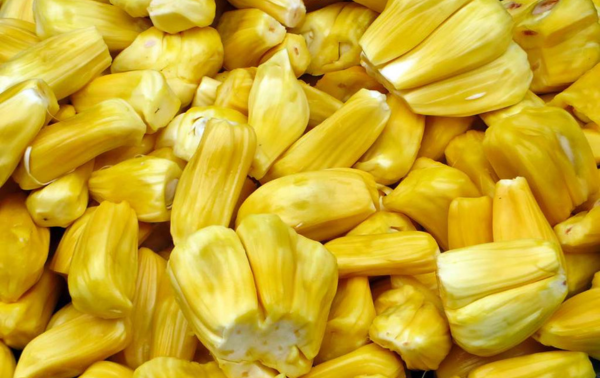Explore the exotic allure of rare tropical fruits with stories ranging from the refreshing Nungu to the versatile Jackfruit, each offering a tantalizing blend of flavors and cultural significance.
Nungu (ice apple)
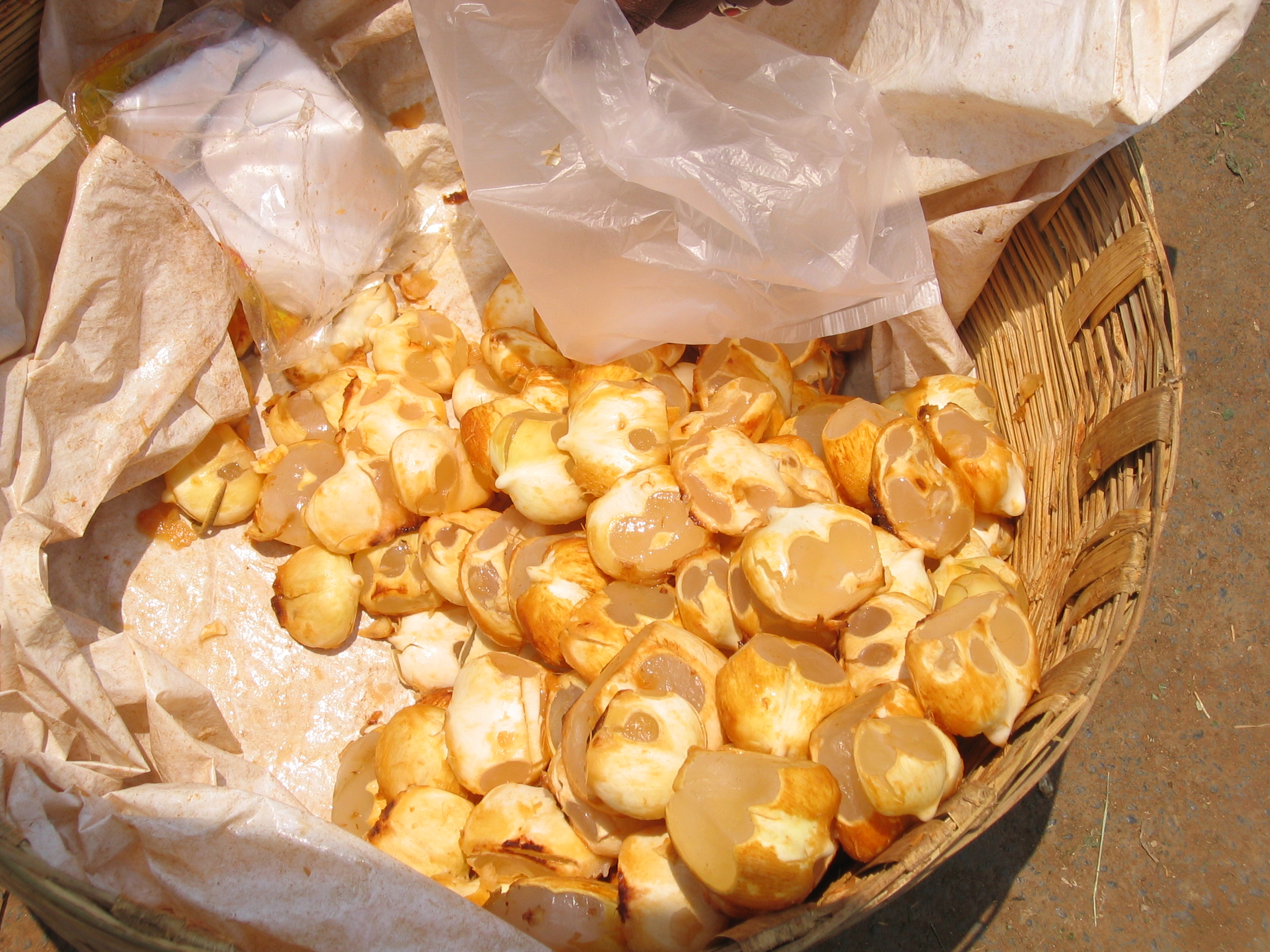
The Nungu, also known as the ice apple, is the fruit of the palmyra/palm tree and is popular in parts of South India. One can often find small roadside vendors hawking Nungu in Tamil Nadu, who shave the husk away on the spot for the freshest fruit. While its native origins lie in the Andes mountains of South America, Nungu is believed to have been introduced to India by the Portuguese during colonial times. Today, it thrives in the tropical regions of South India, particularly in states like Tamil Nadu and Kerala.
The fruit boasts of a translucent, white, or sometimes pale green, jelly-like flesh enclosed in a thin, papery skin. But the magic of Nungu lies in its name – the inside is liquidy and it delivers a burst of cool refreshment upon consumption, making it a refreshing companion during summer. Nungu is a natural coolant, since its water content is approximately 90% and is considered beneficial to health during summers. It’s also attributed with various health benefits in traditional medicine, and is commonly used to treat digestive issues and fevers.
Nungu remains a popular choice for its cooling properties and unique texture. It’s often enjoyed fresh with a sprinkle of salt or black pepper, offering a delightful and refreshing respite from the heat. Nungu juice, a concoction of the fruit’s flesh and water, is another popular way to experience its cooling properties and subtle sweetness. In South India, particularly in Tamil Nadu, the fruit features in traditional Ayurvedic practices, which recognizes Nungu’s hydrating properties and recommends its use for treating diarrhea, dysentery, and urinary tract infections. Practitioners often prescribe Nungu juice or concoctions made with its flesh and honey to alleviate these ailments. Research suggests that Nungu’s high fiber content might aid digestion, lending some credence to its traditional use for stomach issues.
Sources:
https://banjaranfoodie.com/2021/05/26/what-are-ice-apples
https://www.hexahealth.com/blog/ice-apple
Jackfruits
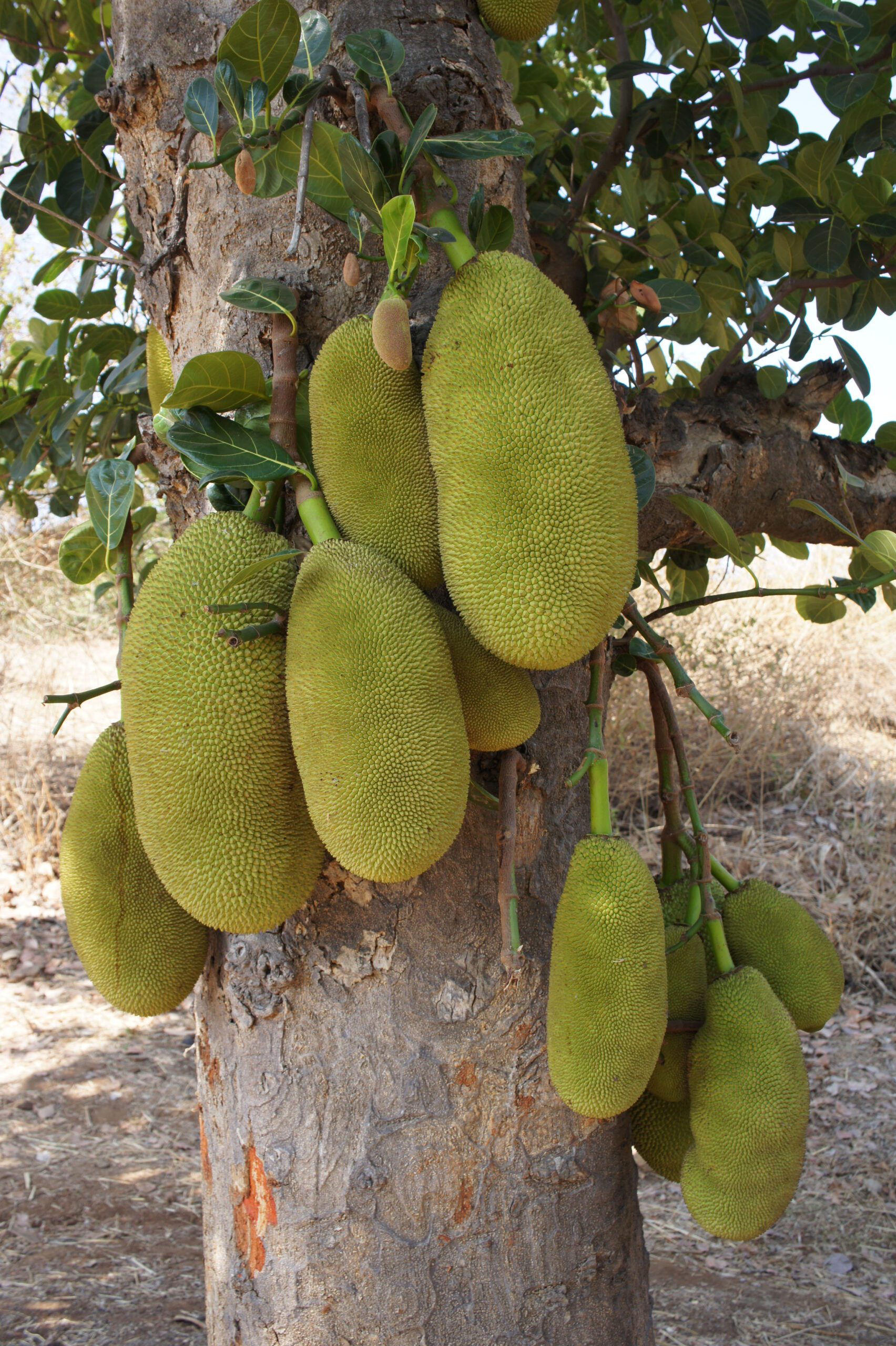
Jack fruits are a remarkable fruit, popular in South India. They’re known for being the largest fruit that can grow on a tree, and can reach impressive sizes – sometimes weighing over 50 pounds!! They have a tough and spiky exterior, with soft, yellow lobes on the inside.
Ripe jackfruits have a sweet, unique flavor that, while likened to a mix of fruits like apples, pineapples, mangoes, and bananas, is incomparable. This makes it a favorite for eating by itself. However, they’re not just a one-trick pony; the unripe version is a culinary chameleon of sorts. In their rawer state, jack fruits have a more neutral taste and a meaty texture, making them an excellent plant-based substitute for meat in various dishes, from curries to tacos. This author, personally, is partial to fresh jackfruit with a drizzle of honey on top, or fried into thinly sliced chips!
Jack fruits are not only versatile and tasty but also packed with good-for-you nutrients. They’re a source of vitamins, minerals, fiber, and antioxidants. Even the seeds of the jack fruit are edible and can be cooked in several ways, adding value to this already incredible fruit.
In many parts of the world, especially in India, jack fruits are more than just food; they also have cultural significance. They’re considered to bring abundance and prosperity, and revered in some parts as a sacred tree with the power to ward off evil spirits. They’re also an integral part of the culture in Kerala, where they’ve been designated as the official state fruit!
Sources:
https://www.slurrp.com/article/jackfruit-history-in-india-and-its-rising-popularity-1681992596287
https://www.goya.in/blog/jackfruit-the-malayali-identity
https://tenderly.medium.com/jackfruit-india-eee207285d87
https://www.thehindu.com/news/national/tamil-nadu/panruti-the-jackfruit-paradise/article65532747.ece
LANGSAT
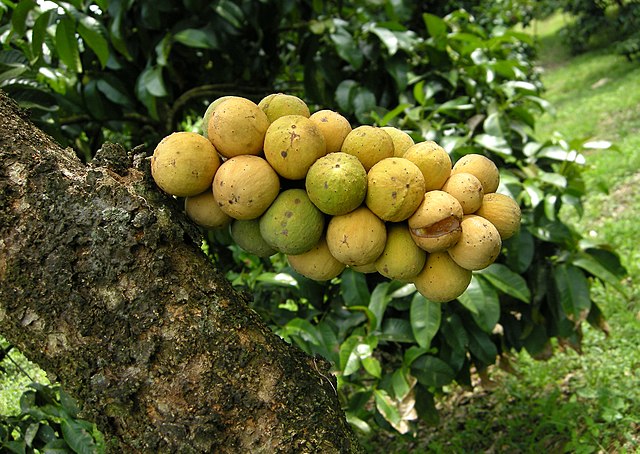
Lansitum domesticum or Langsat is a surprise package, available in Southern India. The Langsat, a fruit native to South-East Asia, particularly Malaysia and Indonesia, is thought to have migrated to India by traders in the centuries past. Nowadays, it is cultivated in the warm and humid atmosphere of the Southern States, i.e., Kerala, Karnataka, Tamil Nadu, and Maharashtra.
The appearance of Langsat is captivating. These tiny, cherry-sized fruits are about 2-4 centimeters in diameter and usually grow in clusters that remind us of miniature bunches of golden orbs. The thins and leathery skin varies from yellow to pale brown to indicate the juicy treasure contained underneath. In contrast to the thorny Rambutan, the Langsat’s smooth exterior makes it a joy to handle.
While the physical beauty of Langsat is indeed captivating, the magical element of this fruit is actually beyond its visual qualities. Beneath the fine skin is a translucent, segment fruit that bears a resemblance to those from the citrus family. A single bite reveals a juicy inside that has a sweet and tangy taste, making it the perfect bite for a hot summer day.
Langsat’s significance extends beyond its refreshing taste. In some South Indian communities, the fruit holds a place in traditional medicine. Besides being a folk treatment for eye complications, some people also use it to treat stomach problems including ulcers and flatulence, and as a mosquito repellent. According to the locals, the seeds which are removed from the plant are thought of as having medicinal properties and it is used for the treatment of different kinds of diseases. Nevertheless, this requires further research.
The Langsat can also be used in various culinary preparations, in addition to being enjoyed fresh. The fruit finds its way into various regional preparations, and can also be preserved in syrups or transformed into jams and jellies, capturing its flavor for year-round enjoyment.
Despite its growing popularity in Southern India, Langsat remains a niche fruit compared to more mainstream options. Its limited shelf life and specific climatic requirements restrict its wider availability.
Sources:
https://www.inetfarms.com/thisfruit/154
WOOD APPLE (Bael)
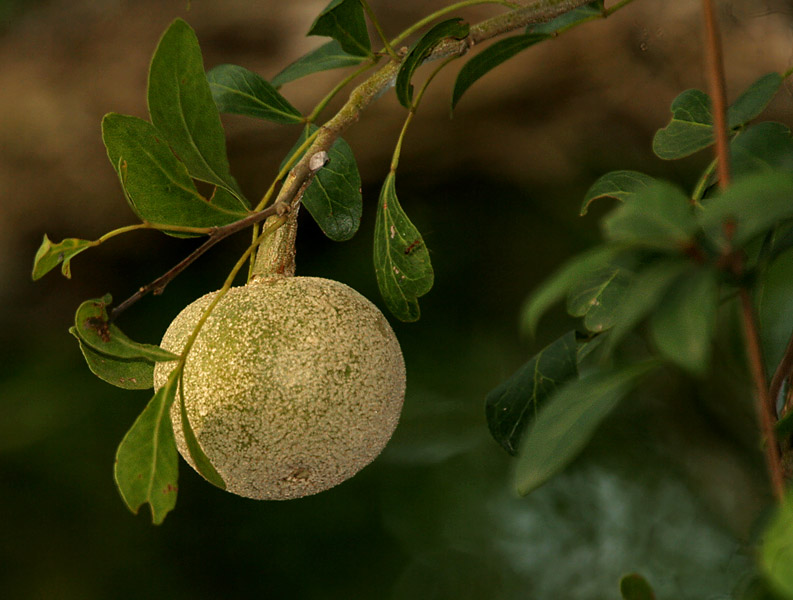
Amidst the diverse bounty of fruits that grace the Indian subcontinent, the wood apple stands tall as a revered and cherished offering. Known by various names such as bael, kaitha, or vellaga pandu, this tropical delight has woven itself into the cultural tapestry of the nation, transcending mere culinary delights to hold a sacred place in religious and medicinal traditions.
Botanically known as Limonia acidissima, the wood apple tree is a hardy and resilient specimen, thriving across the length and breadth of India. From the arid landscapes of the western deserts to the lush, verdant hills of the south, these trees have found a home, their gnarled branches bearing witness to the passage of time and the enduring legacy of this remarkable fruit.
The wood apple itself is a true marvel of nature, encased in a tough, woody shell that conceals a treasure trove of flavors and textures. As one peels away the outer layer, a rich, sticky pulp is revealed, its hue a deep, earthy brown that belies the tangy, slightly acidic taste that lingers on the palate. This unique flavor profile has earned the wood apple a place of honor in traditional Indian cuisine, where it is used to craft an array of chutneys, jams, and beverages, each one a celebration of the fruit’s distinctive character.
Yet, the wood apple’s significance extends far beyond the culinary realm. In the ancient traditions of Ayurveda, this fruit is revered for its medicinal properties, believed to possess the power to alleviate a myriad of ailments, from digestive issues to respiratory conditions. Its leaves, too, hold a sacred place in Hindu rituals, adorning altars and offerings as a symbol of reverence and purity.
As the scorching summer sun beats down upon the Indian plains, the wood apple emerges as a refreshing respite, its tangy flesh and cooling properties offering a reprieve from the relentless heat. In this way, the fruit has become an integral part of the Indian summer experience, a cherished tradition passed down through generations, a testament to the enduring bond between the land and its people.
Whether savored fresh from the tree or transformed into a myriad of culinary delights, the wood apple remains a beloved and revered fruit in India, a tropical treasure that encapsulates the rich tapestry of the nation’s cultural heritage and culinary traditions.
Sources:
https://en.wikipedia.org/wiki/Wood_apple
https://www.agrifarming.in/wood-apple-farming
https://www.mdpi.com/2311-7524/8/1/67
Sitaphal
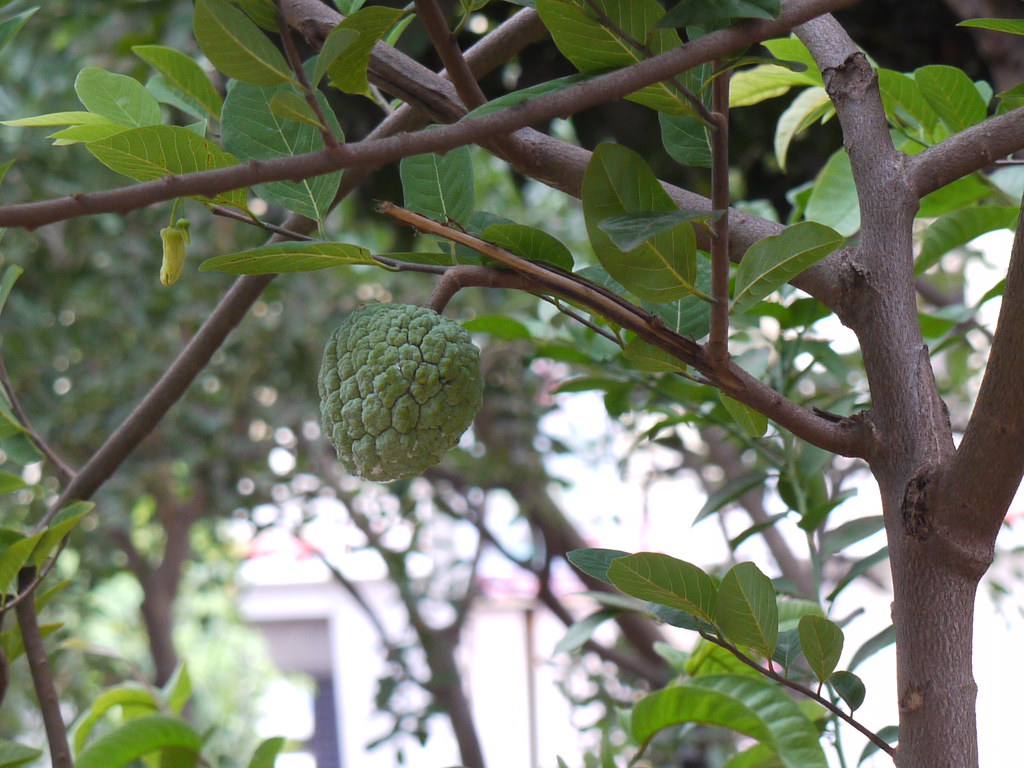
In the heart of India’s fertile lands, a special fruit called Sitaphal, or custard apple, grows. This fruit is not as famous as the mango or banana, but those who know it love it for its sweet taste and creamy insides.
Sitaphal has a green, bumpy skin that might not look very inviting, but inside, it’s a different story. The flesh is soft, white, and full of sweetness, almost like a mix of banana, pineapple, and pear. It’s filled with big, black seeds that you have to spit out, but the effort is worth it for the delicious fruit.
People in India wait for the Sitaphal season, which is usually from late summer to early winter. During this time, you can find the fruit being sold on carts by street vendors, in local markets, and sometimes even under the trees where they fall when ripe.
Apart from being eaten just as it is, Sitaphal is also used in making sweets and desserts. In India, it’s common to blend the pulp into a smoothie or mix it into ice cream, giving these treats a natural, tropical flavor that’s hard to find anywhere else.
Sitaphal is not just tasty; it’s also good for you. It has a lot of vitamins and minerals, like Vitamin C and potassium, and it’s also a source of energy. Because of this, it’s often recommended as a healthy snack.
Even though Sitaphal might not be as well-known as some other fruits, it holds a special place in the hearts of those who grew up eating it. It’s a simple pleasure, a sweet reminder of the richness of India’s fruit variety.
Sources:
https://actascientific.com/ASAG/pdf/ASAG-07-1289.pdf
https://www.researchgate.net/publication/282952450_Sitaphal_Reemergence
By – Mrinalini Natarajan
